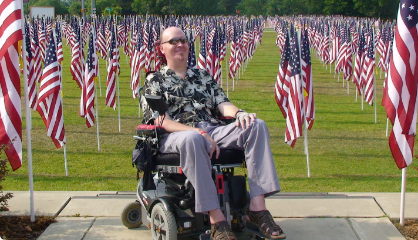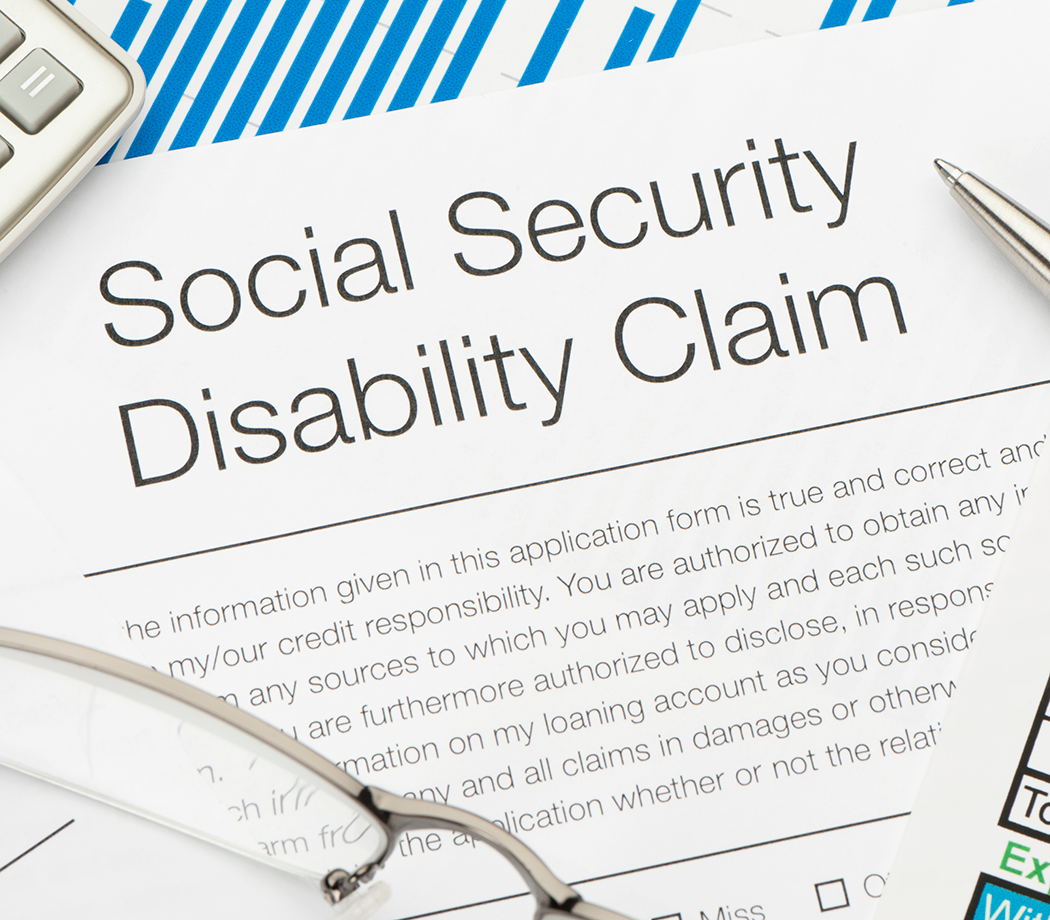For Veterans
Department of Defense
The Department of Defense (DOD) offers myriad resources for active and reserve component service members and veterans.
These resources are much deeper and much more user-friendly now than they were a generation ago, thanks in large part to the commitment of the U.S. government to make documents and policies more widely available and more understandable.
For an overview of military topics and links to hundreds of DOD related programs, visit www.defense.gov.
Wounded, Ill, or Injured programs
Comprehensive care for a severely wounded service member requires coordination across agencies and disciplines, and Wounded Warrior programs offer this linkage.
Each of the military branches has its own Wounded Warrior program to address specific recovery, rehabilitation, and reintegration goals. These programs provide life-time support for the service member and eligibility does not end when the service member is discharged from a military treatment facility.
Army Wounded Warrior Program (AW2) is administered by the U.S. Army Warrior Transition Command. This group offers personalized recovery services for severely wounded soldiers and families for as long as they need help.
All wounded, injured, and ill soldiers are assigned to a Warrior Transition Unit (WTU) to focus on healing before returning to duty or transitioning to veteran status. The U.S. Army established WTUs at major military treatment facilities to provide support to wounded soldiers who require at least six months of rehabilitative care and complex medical management.
Each wounded soldier has a personalized Comprehensive Transition Plan (CTP) with goals that allow them and their families to move forward toward life post-injury.
To contact a specific WTU, call the Wounded Soldier and Family Hotline, toll-free 1-800-984-8523. Those with extensive medical needs are assigned a local AW2 Advocate for long-term assistance.
Medical Evaluation Process
Integrated Disability Evaluation System (IDES) occurs after an injured or ill service member has passed through the acute phases of treatment.
The service member will soon have to choose to Continue on Active Duty (COAD), Continue on Active Reserve (COAR), or separate/retire from the military. The IDES process begins when it appears that a service member’s condition is permanent and may interfere with his or her ability to serve on active duty.
A service member who fails to meet medical retention standards will be referred into the IDES by the medical authority when further treatment will not render the service member capable of performing the duties of office, grade, rank, or rating. The IDES includes a medical evaluation board (MEB), a physical evaluation board (PEB), an appellate review process and a final disposition.
The MEB is an informal process initiated by the medical treatment facility. A PEB is a formal fitness-for-duty and disability determination that may recommend one of the following:
- Return the member to duty
- Place the member on the temporary disabled/retired list
- Separate the member from active duty
- Medically retire the member
Importantly, the PEB will determine the percentage of the service member’s disability compensation. If the service member disagrees with any of the information included in the medical board documents, he or she may submit a rebuttal.
The PEB reviews all medical board documentation to determine if the service member is fit for continued military service. Members found not fit for duty have the right to demand a Formal Board. An attorney is then appointed or hired to represent the service member. The Board reexamines the evidence, hears testimony, and considers any new evidence before making a recommendation.
Veterans medically separated from the U.S. military between September 11, 2001 and December 31, 2009 can have their disability ratings reviewed by the Physical Disability Board of Review (PDBR) to ensure fairness and accuracy.
The PDBR, legislated by Congress and implemented by the Department of Defense, uses medical information provided by the VA and the military. Once a review is complete, the PDBR forwards a recommendation to the secretary of the respective branch of the armed services. The service branch makes the final determination on disability rating.
Department of Veterans Affairs
The United States Department of Veterans Affairs (VA) is responsible for administering benefits for veterans, their families, and survivors. Benefits include disability compensation, pension, education, home loans, life insurance, vocational rehabilitation, survivors’ benefits, medical and burial benefits.
Eligibility for VA programs varies. Veterans are categorized into eight priority groups, based on factors such as service-connected disabilities, income, and assets.
Veterans with a 50 percent or higher service-connected disability are generally provided comprehensive care and medication at no charge. Veterans with lesser qualifying factors who exceed a predefined income threshold make co-payments for their care.
VA dental and nursing home care benefits are more restricted. No co-payment is required for VA services for veterans with military-related medical conditions, which are defined as problems that started or were aggravated due to military service.
Reservists and National Guard personnel who served stateside in peacetime settings or have no service-related disabilities generally do not qualify for VA health benefits.
Polytrauma care is for veterans and returning service members with injuries to more than one physical region or organ system, which results in physical, cognitive, psychological, or psychosocial impairments and functional disability.
When medically stable, the most severely injured are often transferred to one of five Polytrauma Rehabilitation Centers (PRCs)
- McGuire VA Medical Center in Richmond, Virginia
- James A. Haley VA Medical Center in Tampa, Florida
- Minneapolis VA Medical Center in Minnesota
- Palo Alto Health Care System in California
- South Texas Veterans Health Care System in San Antonio, Texas
There are also 23 Polytrauma Network Sites, allowing service members to recover closer to home.
Additional VA Services
The Federal Recovery Coordination Program (FRCP) is a VA initiative designed to cut across bureaucratic lines and reach into the private sector. Injured service members or veterans are assigned a Federal Recovery Coordinator (FCR), who develops a Federal Individualized Recovery Plan with input from a multidisciplinary healthcare team. Though initially based in military and VA facilities, the FRCP involvement maintains a lifetime commitment to veterans and their families.
My HealtheVet is a free, online personal health record designed for veterans, active-duty service members, and their dependents and caregivers. Users who have a basic account are able to view their self-entered information. Advanced or premium account types may allow one to refill VA prescriptions online and view parts of VA health records and/or DOD Military Service Information. My HealtheVet also offers a Caregiver Assistance Center.
Civilian Health and Medical Program of the Department of Veterans Affairs (CHAMPVA) is a health benefits program. To be eligible for CHAMPVA, a beneficiary cannot be eligible for TRICARE. CHAMPVA provides coverage to the spouse or widow and to the children of a veteran who died or who is permanently and totally disabled. Primary family caregivers of eligible post-9/11 veterans may also qualify for CHAMPVA.
Veterans who have served at least ninety days of active duty service after September 10, 2001 and received an honorable discharge will qualify for the Post-9/11 GI Bill. To qualify for the full benefit, a veteran must have served at least three years of active duty after September 10, 2001. Benefits include college tuition and, in some cases, housing, books, and training and retraining programs.
eBenefits is a one-stop resource for active duty military personnel and veterans.
With an eBenefits account, you can apply for benefits, download a DD 214 or other important documents, and view benefits status regarding compensation, housing, adaptive housing, home loans, education, health care, transition assistance, vocational rehabilitation, insurance, death, etc.
Combat veterans can receive cost-free medical care for any condition related to their service for five years after the date of their discharge or release. OEF/OIF combat veterans may be eligible for one-time dental if applied within 180 days of separation date.
TRICARE
If you are a service member in the armed services, your healthcare needs are processed by TRICARE, a family of health plans for service members and their families based upon their location and status.
Service members on active duty, including Reservists and National Guardsmen on orders to federal active duty for more than thirty days, are most likely covered by TRICARE Prime and coordinated by a Primary Care Manager (PCM) at a Military Treatment Facility.
If you retire, you and your family are automatically covered under TRICARE Standard and TRICARE Extra. Neither requires enrollment fees or premiums.
When a military retiree turns sixty-five, his or her primary health insurance becomes Medicare. However, TRICARE Standard serves as a secondary coverage under a program called TRICARE for Life.
Note: Eligibility to receive care under any TRICARE program requires registration in the Defense Enrollment Eligibility Reporting System (DEERS).
Don’t Lose This Number
DD 214 – the Certificate of Release or Discharge from Active Duty – is one of the most important documents you will ever receive during your military service.
It is your key to participation in all VA programs as well as several state and federal programs. Keep your original in a safe, fireproof place, and have certified photocopies available for reference.
Call the National Personnel Records Center at 314-801-0800 to request an application for replacement of your DD 214.
Social Security and Medicare
Military service members can receive expedited processing of disability claims from Social Security.
Social Security pays disability benefits through two programs: the Social Security Disability Insurance (SSDI) program, which pays if you worked long enough and paid Social Security taxes; and the Supplemental Security Income (SSI) program, which pays benefits based on financial need. These benefits are different than those from the VA and require a separate application.
Coverage from Medicare begins automatically after you have received disability benefits for 24 months. For service members who are entitled to Medicare Part A (hospital insurance) and Part B (medical insurance), TRICARE provides Medicare “wraparound” coverage. Medicare is the primary payer for these beneficiaries, and TRICARE serves as a supplement, paying the Medicare deductible and patient cost share.
TRICARE and the Affordable Care Act
The Patient Protection and Affordable Care Act (PPACA) signed into law in 2010 meant changes in health care coverage for many Americans.
The legislation did not apply directly to TRICARE, which is authorized by an independent set of statutes, and remains under authority of the Defense Department and the Secretary of Defense.
TRICARE provides coverage for preexisting conditions and serious illnesses. It includes an array of preventive care services with no cost shares, as well as low deductibles and co-payments, and there are no annual or lifetime caps on coverage.
One benefit addressed by the PPACA, which was previously not part of TRICARE, was coverage of young adults up to age 26. However, the National Defense Authorization Act led to the speedy implementation of TRICARE Young Adult (TYA). This gives eligible uniformed service dependents who are under 26 years old and unmarried the option to purchase TYA, as long as they are not eligible for their own employer-sponsored healthcare coverage.
VA Benefits for Non-service Injuries
Q. My spinal cord was injured in a motor vehicle accident after I returned from active duty. Do I still get VA medical benefits?
A. Yes, you are eligible for VA health care based on your service, which basically means you earned an honorable discharge and have a DD 214.
The VA will assign you to a Priority Group based on whether you have service-connected conditions. Depending on the Priority Group in which you’re placed, you may have co-pays for inpatient care, outpatient care, and prescriptions. If you have private insurance, the insurance company may get billed as well.
In your case of a non-service-connected catastrophic injury, you will be assigned to Priority Group 4, following what’s called a Catastrophic Disability Evaluation conducted by a VA physician. Once deemed catastrophic, a veteran’s income will determine whether he or she will be responsible for co-pays.
There are other benefits available to veterans who are non-service-connected and have a spinal cord injury. Based on being enrolled in the VA system and having loss of use of lower extremities, a veteran is entitled to two customized wheelchairs, a grant to have a vehicle modified, and a small grant for home modifications. These don’t cost the veteran anything as they are administered as an extension of VA health care.
If the veteran has a need for bowel/bladder services, the VA can pay for this contracted care in the home through a fee basis. In many instances, the spouse is the veteran’s caretaker and, once trained by VA, can perform and get paid for these contracted services.
Caregiver Services
The VA provides benefits and services specifically to support family caregivers, both in and out of the home. Contact the VA’s Caregiver Support Line, toll-free 1-855-260-3274, or connect with a Caregiver Support Coordinator at a VA Medical Center.
A Caregiver Support Coordinator is a licensed professional who can match you with services like adult day care centers, home-based primary care, skilled home care, home telehealth resources, respite care, and home hospice care.
Family caregivers of veterans injured post-9/11 may be eligible for additional VA services, including a stipend, travel expenses, respite care, comprehensive training, and medical coverage through VA. .
Resources and Education for Stroke Caregivers’ Understanding and Empowerment (RESCUE), is an online VA resource providing stroke caregivers – applicable also to caregivers of loved ones with other sudden disabilities – with information on how to care for their loved ones.
Employment Resources
Transition Assistance Program (TAP) offers job-search assistance, training information and related services.
Disabled Transition Assistance Program (DTAP) is a key component of transition assistance for service members released because of a disability, qualifying them for VA’s Vocational Rehabilitation and Employment Program. DTAP delivers personalized vocational rehabilitation services to eligible service members by assisting with benefits.
Verification of military experience and training: service members have had numerous training and job experiences. Fortunately, the military has written it all down on the DD Form 2586.
America’s Heroes at Work is a U.S. Department of Labor program that focuses on the employment challenges of returning service members living with traumatic brain injury (TBI) and/or post-traumatic stress disorder (PTSD).
Career Center for Wounded Warriors offers help to find employment after military service. Learn about potential employers and job fairs, get help with your resume, and search for jobs near you.
Disability.gov is managed by the U.S. Department of Labor’s Office of Disability Employment Policy (ODEP) in collaboration with 21 federal agency partners. A major focus is employment.
Federal jobs for veterans: the U.S. government has made a commitment to recruit veterans into the civil service (State Department, Department of Transportation, Homeland Security, etc.).
VetJobs is an Internet job service operated to place veterans with technical skills, management expertise, and leadership skills.
Resources
If you are looking for more information on military and veteran resources, our Information Specialists are available business weekdays, Monday through Friday, toll-free at 800-539-7309 from 9:00 am to 8:00 pm ET.
Additionally, the Reeve Foundation maintains a fact sheet on veteran and military benefits with resources from trusted Reeve Foundation sources. Check out our repository of fact sheets on hundreds of topics ranging from state resources to secondary complications of paralysis.








